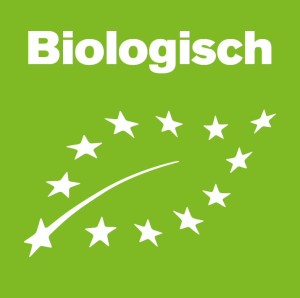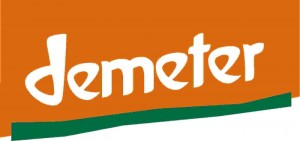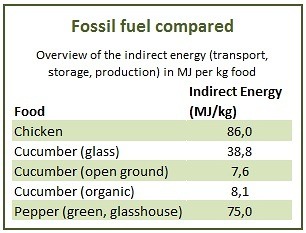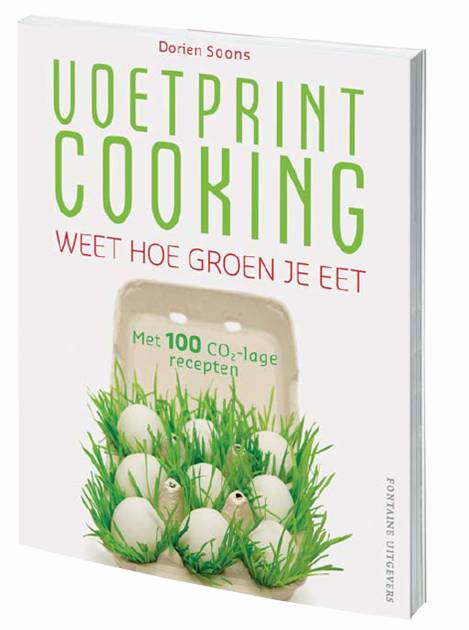Organic
 There are many techniques in agriculture and animal husbandry, which take into account sustainability. One of them is the organic farming and animal husbandry, also called ecological or “organic”.
There are many techniques in agriculture and animal husbandry, which take into account sustainability. One of them is the organic farming and animal husbandry, also called ecological or “organic”.
Organic farming does not use pesticides, no fertilizer use. No genetically modified crops. Takes into account biodiversity and soil quality.
Organic livestock does not preventive use of antibiotics, animal welfare is paramount. Animals get 80-100% organic feed.
 Biodynamic goes even further: it aims to a cycle of feeding and manure on the farm.
Biodynamic goes even further: it aims to a cycle of feeding and manure on the farm.
Organic food – Mentioned advantages:
- Attention to animal welfare. (You might even say perhaps?: fulfills the minimum prerequisite)
- Attention to biodiversity
- Soil quality higher than conventional farming
- Human health; Less toxic substances and antibiotics
- Organic livestock: less energy consumption[1]. Side note: changed use of land and thereby climate change effects are not included.
- Taste is better (subjective)
- In poor growing conditions AND little or no use of chemical fertilisers and pesticides in conventional farming (situation developing countries): organic farming would generate 100-180% revenues of conventional farming. [2]
Organic food – Mentioned disadvantages:
- Organic farming: depending on the product a lightly higher energy use[3]. Side note: Almost negligible.
- Under optimal growing conditions and a high use of fertilizers and pesticides in conventional farming (situation Europe and North America): organic farming harvest equals 60-100% of conventional farming. [4] this is due to more crop failures, making more product for the same amount of space is required. We already turn to other parts of the world for our food, where that leads to deforestation. The IPCC (2006) has estimated that landconversion of nature to agriculture is responsible for about 17% of global greenhouse gas emissions. Most land conversion takes place for agriculture. [5]
- For organic pig&chicken-feed more feed is needed than for non-organic pigs & chickens. A portion of that food is organic soy from South America.
 Example: LandUse pig feed (in m2 per year/kg meat), Blonk[6]
Example: LandUse pig feed (in m2 per year/kg meat), Blonk[6]
- In the case of further population growth and increasing lack of space for agriculture, revenues per m2 will become an increasingly important issue. Not allowing GMOs will then become under pressure, see page about the advantage and disadvantages of GGO’s.
To keep in mind:
Along with the existence of the many labels for sustainable food, the “brand” organic is also somewhat blurring.
An example: An organic pepper seems a fine choice. That is a good option if you are sure that comes from a non-heated greenhouse. It is in the shop often tricky to figure this out. Peppers that do come from a heated greenhouse (whether they are organic or not) have energy values as high as meat! (Peppers from greenhouses where energy-saving measures have been taken will have lower emission values of course.)
 Figure: VoetprintCooking®-cookbook, Source: Gerbens-Leenes, Groenkookboek, 2000
Figure: VoetprintCooking®-cookbook, Source: Gerbens-Leenes, Groenkookboek, 2000
Conclusion:
It is difficult to give an unambiguous opinion on organic foods. It is good to continue to monitor the developments, because the objectives of the organic sector are in line with a sustainable world (organic farming is a production system that supports the health of soils, ecosystems and people and sustains.[7] Further methodology development is needed to allocate space to food products, in reports it is often difficult to figure out to what extent that is taken into account and if so how it is calculated.
It would be good if there is greater transparency, scientific reports with conclusions now romp over each other. Then the question rices: “Is the consumer still able to understand it?”
[1]Energieverbruik, broeikasgasemissies en koolstofopslag, De biologische en de gangbare landbouw vergeleken, Sukkel, Wur, tabel 1.1, page 5 en Gerbens-Leenes en Blonk Milieuadvies
[2] www.biologica.nl: FAO-Conferentie in Rome (2007) werden modelberekeningen van Badgley e.a. gepresenteerd; het gaan om productie per hectare
[3] Energieverbruik, broeikasgasemissies en koolstofopslag, Sukkel, Wur, 2007 en Groenkookboek, Gerbens-Leenes, IVEM, Groningen 2000
[4] www.biologica.nl: FAO-Conferentie in Rome (2007) werden modelberekeningen van Badgley e.a. gepresenteerd; het gaan om productie per hectare
[5] Milieukundige vergelijking van vleesvervangers, Blonk, 2009, p. 6
[6] Milieuanalyse vleesproducten, Blonk, 2007, page 22
[7] Definitie van biologische landbouw volgens IFOAM. IFOAM is de internationale federatie van biologische-landbouworganisaties.

